If you’re looking for a way to add protein and flavor to your meals without using traditional kidney beans, you’ve come to the right place.
There are many different types of legumes that can be used as substitutes for kidney beans, each with their own unique taste and texture.
From chickpeas and lentils to black-eyed peas and navy beans, here is a list of the best substitutes for kidney beans so that you can enjoy your recipes without compromising on flavor.
What Are Kidney Beans?

Kidney beans are a type of legume, which is the same family as lentils and peas.
They have a kidney-like shape that gives them their name, with a deep red color and creamy texture.
These versatile beans are widely used in various cuisines across the world, such as Mexican dishes like chili con carne or Indian curries.
They’re also packed with protein and fiber, making them an excellent source of nutrition for vegetarians and vegans who cannot get enough from animal products alone.
When it comes to cooking, you can use these beans in many different ways.
You can simmer them into soups or stews, mash them up for dips or spreads like hummus, puree them for sauces like marinara, fry them for tacos or burritos – there’s no limit to what you can do with kidney beans!
The 16 Best Substitutes For Kidney Beans
Kidney beans are an important part of many recipes, but they can be hard to find in some areas.
Fortunately, there are a number of great substitutes that will provide similar taste and texture.
Here we look at sixteen alternatives to kidney beans:
1 – Black Beans

Black beans are a type of legume that have been enjoyed for centuries in Latin American cuisine.
They have a mild flavor and creamy texture, making them perfect for adding to soups, stews, salads, and casseroles.
Black beans are high in fiber and protein, making them an excellent choice for vegetarians or anyone looking to increase their nutrient intake.
When substituting black beans for kidney beans in recipes, you may need to adjust the cooking time as they take longer to cook than kidney beans.
Also be sure to rinse the black beans before using them as this will help remove any dirt or debris from the surface of the bean.
For best results, soak your black beans overnight before cooking them so they can reach their full flavor potential!
2 – Cannellini Beans

Cannellini beans are a type of white bean that is native to Italy.
These plump, creamy beans have a mild flavor and soft texture that make them ideal for soups, stews, salads, and side dishes.
The key to cooking cannellini beans is to soak them overnight before simmering in water or broth until tender.
When substituting cannellini beans for kidney beans in recipes, you may need to adjust the timing as they take longer to cook than kidney beans.
Their nutty taste and creamy texture make them perfect for adding richness and depth of flavor to any dish.
They can also be mashed into a paste or pureed for use in dips or spreads.
Cannellini beans are an excellent source of protein, fiber, iron, potassium, magnesium and other essential vitamins and minerals making them a great choice!
3 – Pinto Beans
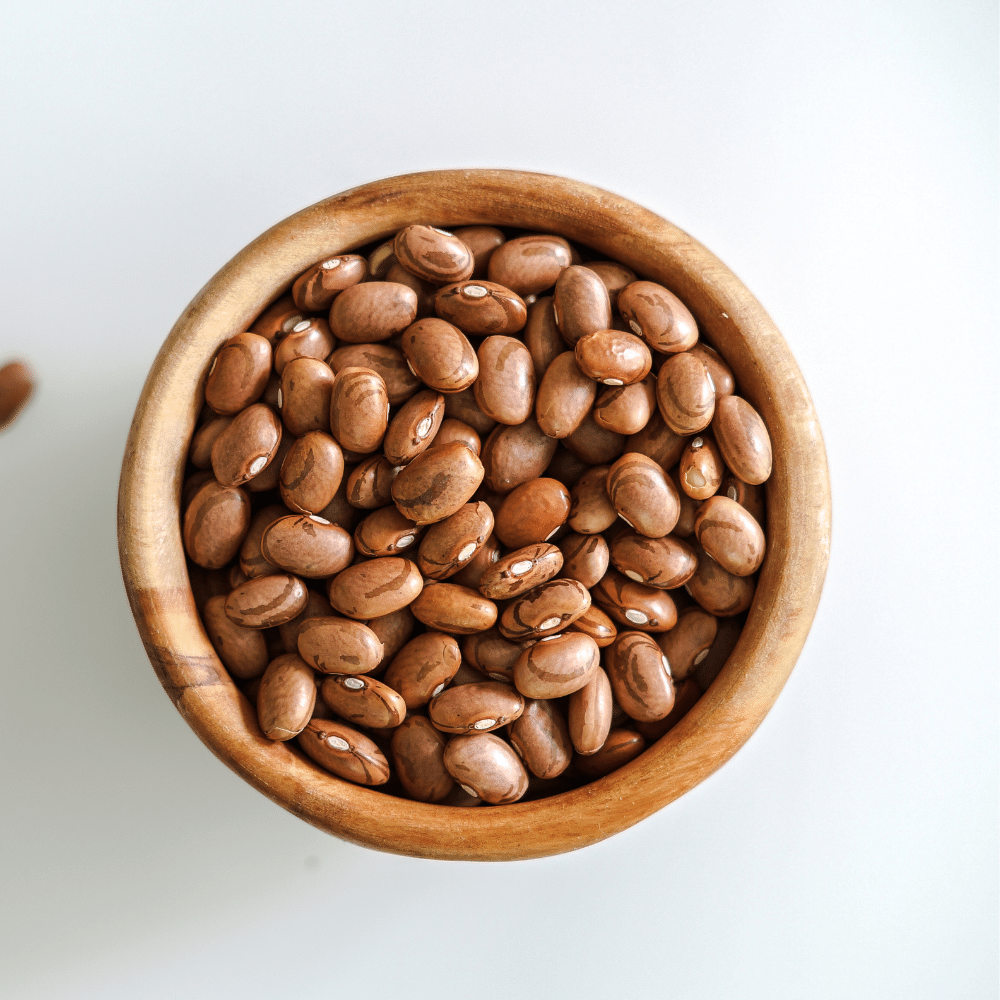
Pinto beans are a type of common bean that originated in Central and South America.
They’re typically small, oval-shaped, and a mottled light brown color.
Pinto beans have a mild flavor and buttery texture when cooked, making them an excellent addition to many dishes.
These beans can be used instead of kidney beans if you happen to be out of those.
Soaking the pinto beans in water overnight will help reduce their cooking time and make them easier to digest; this is recommended before using them in any recipe calling for kidney beans.
Pintos are especially well suited to chili recipes or burritos, where they provide great taste and texture without being overpowering like some other types of legumes may tend to do.
4 – Navy Beans

Navy beans are a small, white variety of legume that have been around since the 19th century.
They’re known for their mild flavor and creamy texture when cooked, making them ideal for soups, stews, and salads.
Navy beans are high in fiber and protein, so they can be a great replacement for kidney beans in recipes.
When cooking with navy beans, it’s important to note that they take longer to cook than other varieties of bean – usually about an hour or more.
To get the most out of your navy beans, try soaking them overnight before cooking them on low heat until tender.
This will help ensure that the navy beans maintain their shape while still delivering maximum flavor.
5 – Great Northern Beans

Great Northern beans are a type of white bean with a mild flavor and creamy texture.
They’re perfect for soups, stews, salads, or side dishes.
These beans are larger than navy beans and have a slightly nutty taste.
When cooked properly, they become tender without falling apart.
For those looking to substitute kidney beans in recipes, Great Northern beans can make an excellent alternative – however you may need to adjust the cooking time when adding them into mixtures.
Their unique qualities make Great Northern Beans an essential pantry staple that can be used in many different dishes.
6 – Adzuki Beans

Adzuki beans are small, dark red beans that have a sweet and nutty flavor.
Native to East Asia, these versatile legumes can be used in a variety of dishes such as salads, soups, stews, and desserts.
Adzuki beans are high in fiber and protein, making them an excellent replacement for kidney beans.
When cooked properly they have a creamy texture that makes them ideal for puréeing into dips or spreads.
They also work well when added to rice dishes or stirred into curries for extra flavor and nutrition.
For those looking to replace kidney beans with something different, adzuki beans offer a unique twist on traditional recipes.
7 – Borlotti Beans

Borlotti beans are a type of Italian legume that has a nutty flavor and creamy texture.
These beige-colored beans have red streaks on their outer skin, giving them an attractive appearance.
They can be cooked in soups, stews, or salads for added protein and fiber.
Borlotti beans are also great for making dips like hummus or purees like refried beans.
When substituting kidney beans with borlotti beans, it is important to remember that they take longer to cook than kidney beans do.
However, the extra time is worth it as borlotti beans provide more flavor and texture than kidney beans do.
For those looking for an interesting alternative to traditional dishes, borlotti beans are definitely worth trying!
8 – Butter Beans

Butter beans, also known as lima beans, are a type of legume that have a creamy texture and buttery flavor.
They can be found in many different shapes and sizes, ranging from small to large.
These beans are high in protein and fiber, making them an excellent addition to any meal.
When substituting for kidney beans in recipes, butter beans can offer a milder flavor with a slightly sweet undertone.
They are best cooked slowly over low heat until they become tender and creamy.
Butter beans can be used in soups, stews, salads or side dishes like succotash or mashed potatoes.
Their versatility makes them an ideal pantry staple for adding extra nutrition to your meals!
9 – Anasazi Beans

Anasazi beans are a unique variety of heirloom beans with an earthy, nutty flavor.
These small, kidney-shaped legumes have a creamy texture and mild taste that makes them ideal for soups, stews, salads, and side dishes.
Anasazi beans are high in protein and fiber and low in fat, making them a healthy alternative to other types of beans.
They also contain essential vitamins and minerals.
When substituting Anasazi beans for kidney beans in recipes you may need to adjust the cooking time as they take longer to cook than other varieties of dried bean.
Their unique flavor profile makes Anasazi Beans an excellent choice when looking for a tasty yet nutritious addition to your meals!
10 – Garbanzo Beans

Garbanzo beans, also known as chickpeas, are a type of legume with a nutty flavor and creamy texture.
They have been enjoyed around the world for centuries and are an excellent source of plant-based protein.
Garbanzo beans can be cooked in various ways such as boiling, roasting, or frying them.
When substituting garbanzo beans for kidney beans in recipes, it’s important to note that they take longer to cook than kidney beans do.
Garbanzo beans are great additions to salads, soups, stews and curries due to their hearty texture and rich flavor.
They can also be mashed into hummus or blended into dips for a unique twist on traditional dishes.
11 – Chili Beans
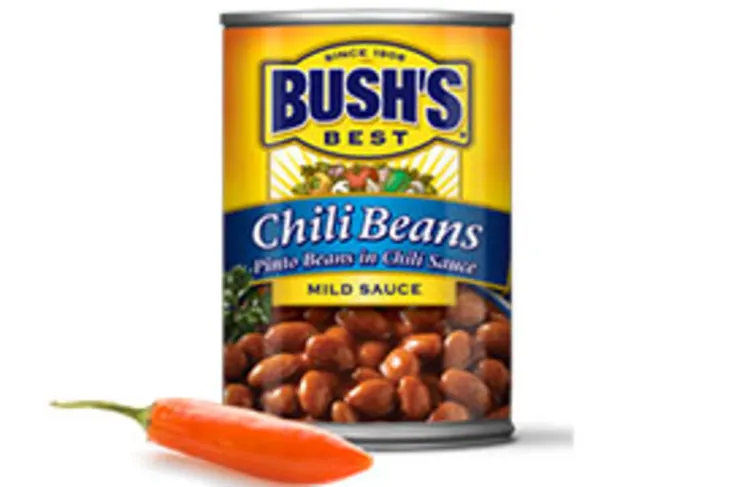
Chili beans are a type of pinto bean that have been cooked in a spicy sauce.
They come in a variety of heat levels, ranging from mild to extra hot.
The beans are usually soaked overnight before being simmered with the chili sauce for several hours until they become tender and flavorful.
Chili beans make an excellent substitute for kidney beans, as they offer similar texture and flavor but with added spice.
They can be used in any recipe that calls for kidney beans, such as chili con carne or burritos.
For those looking to add some kick to their dishes, chili beans are sure to do the trick!
12 – Small Red Beans
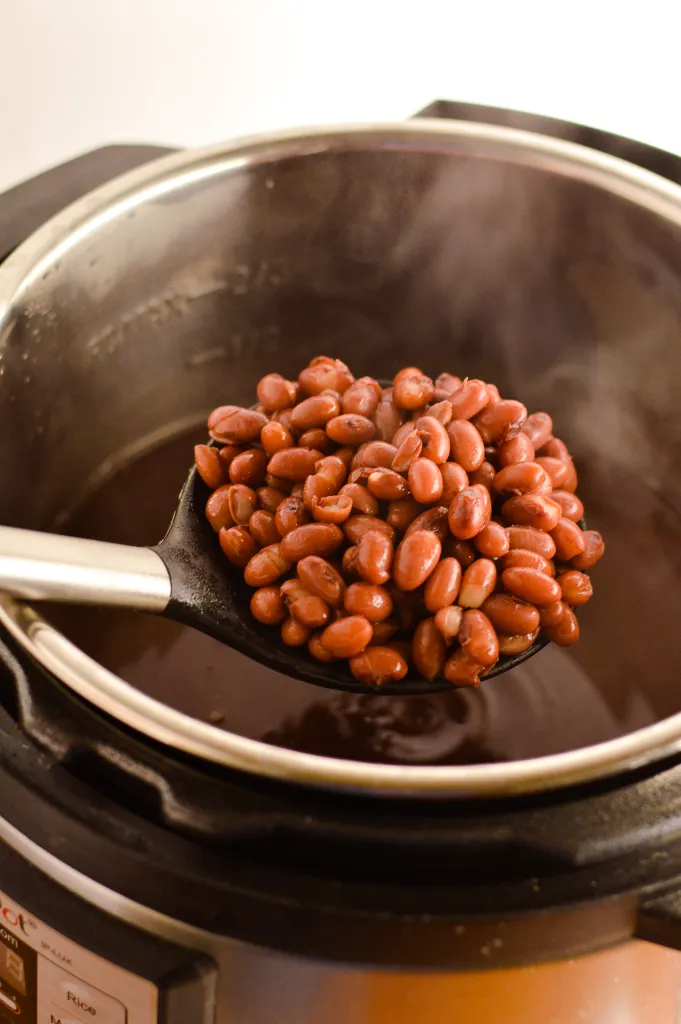
Small red beans are a type of legume that is widely used in Mexican, Caribbean, and South American cuisine.
These small, round beans have an earthy flavor and creamy texture when cooked.
They are high in protein and fiber and low in fat, making them a great addition to vegetarian dishes.
Small red beans can be used when you’re out of kidney beans in most recipes – they will need to cook longer than kidney beans due to their smaller size.
They can be boiled or simmered with seasonings like garlic, onions, cumin, oregano, bay leaves and chili peppers for added flavor.
Small red beans are also popularly used in soups and stews or served over rice dishes like Mexican-style arroz con frijoles rojos (rice with small red beans).
13 – Pink Beans
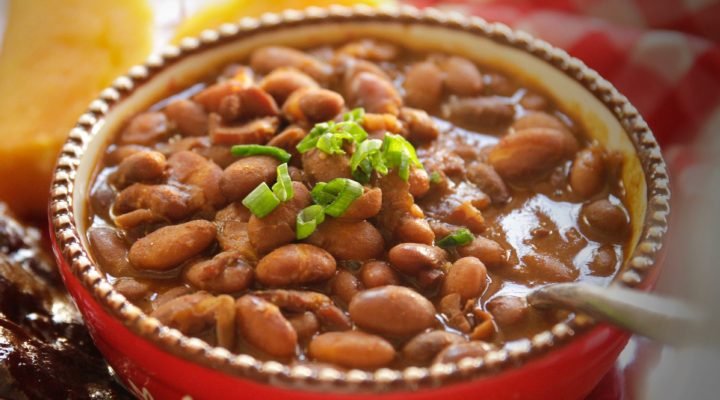
Pink beans are a type of small, creamy-textured legume that is popular in Latin American and Caribbean cuisine.
They have a mild flavor with hints of earthiness and sweetness, making them an ideal addition to soups, stews, salads, and side dishes.
Pink beans can be used as a substitute for kidney beans in recipes such as chili or refried beans.
However, they may need to be cooked longer than kidney beans due to their smaller size.
When preparing pink beans from scratch, it’s important to soak them overnight before cooking them on the stovetop or in the slow cooker.
Pink beans are also available canned or dried for convenience.
Try using them in your favorite dishes for an interesting twist!
14 – Mung Beans

Mung beans are small, green legumes that have been a staple in Asian cuisine for centuries.
These versatile beans can be eaten whole, split and hulled, or ground into flour.
Mung beans are known for their high protein content and mild flavor, making them an excellent substitute for kidney beans in many dishes.
They can be cooked with spices to make a flavorful soup or stew, mashed and mixed with vegetables to create fritters or patties, or boiled until tender and used as an accompaniment to rice dishes.
The best part about mung beans is that they cook quickly compared to other types of dried beans – usually within 30 minutes!
15 – Pigeon Peas
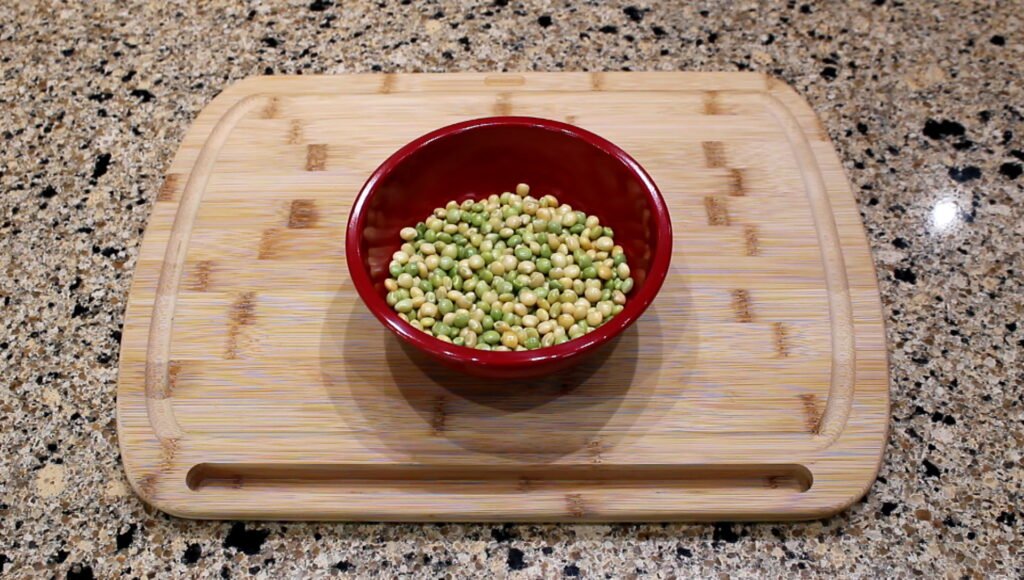
Pigeon peas are a type of legume native to India, Africa, and the Caribbean.
They have a nutty flavor and creamy texture that is similar to kidney beans, making them an excellent substitute in many dishes.
Pigeon peas are high in protein and fiber and low in fat, making them a healthy alternative for those looking to reduce their meat consumption.
The best way to cook pigeon peas is by boiling them until they become tender – this usually takes about 20 minutes.
Once cooked, they can be used as a side dish or added into soups, stews, curries, salads, stir-fries or even rice dishes.
For those looking for a delicious plant-based option with plenty of nutritional benefits, pigeon peas are an excellent choice!
16 – Lentils

Lentils are a type of legume that have been consumed for centuries.
They are packed with protein, fiber, and essential vitamins and minerals.
Lentils come in many varieties, from red to green to black.
Each type has its own unique flavor profile and texture.
Red lentils tend to be milder in taste while green and black lentils offer more robust flavors.
When substituting kidney beans for lentils, it’s important to remember that they have different cooking times.
Lentils cook much faster than kidney beans so the cooking time needs to be adjusted accordingly.
Lentils can be used in a variety of dishes such as soups, stews, salads, curries or even as an addition to rice dishes.
They also make a great meat substitute due to their high protein content.
Overall, lentils are an excellent alternative if you don’t want to use kidney beans in your recipes!

The 16 Best Substitutes For Kidney Beans
Ingredients
- Black Beans
- Cannellini Beans
- Pinto Beans
- Navy Beans
- Great Northern Beans
- Adzuki Beans
- Borlotti Beans
- Butter Beans
- Anasazi Beans
- Garbanzo Beans
- Chili Beans
- Small Red Beans
- Pink Beans
- Mung Beans
- Pigeon Peas
- Lentils
Instructions
- Pick your favorite substitute from the list above.
- Follow cooking directions for your selected substitute with the proper ratio of ingredients.
Hi, I'm Benjamin. I love cooking, long walks, and my girlfriend! Here you’ll find simple and delicious recipes that you can make in 30 minutes or less.

